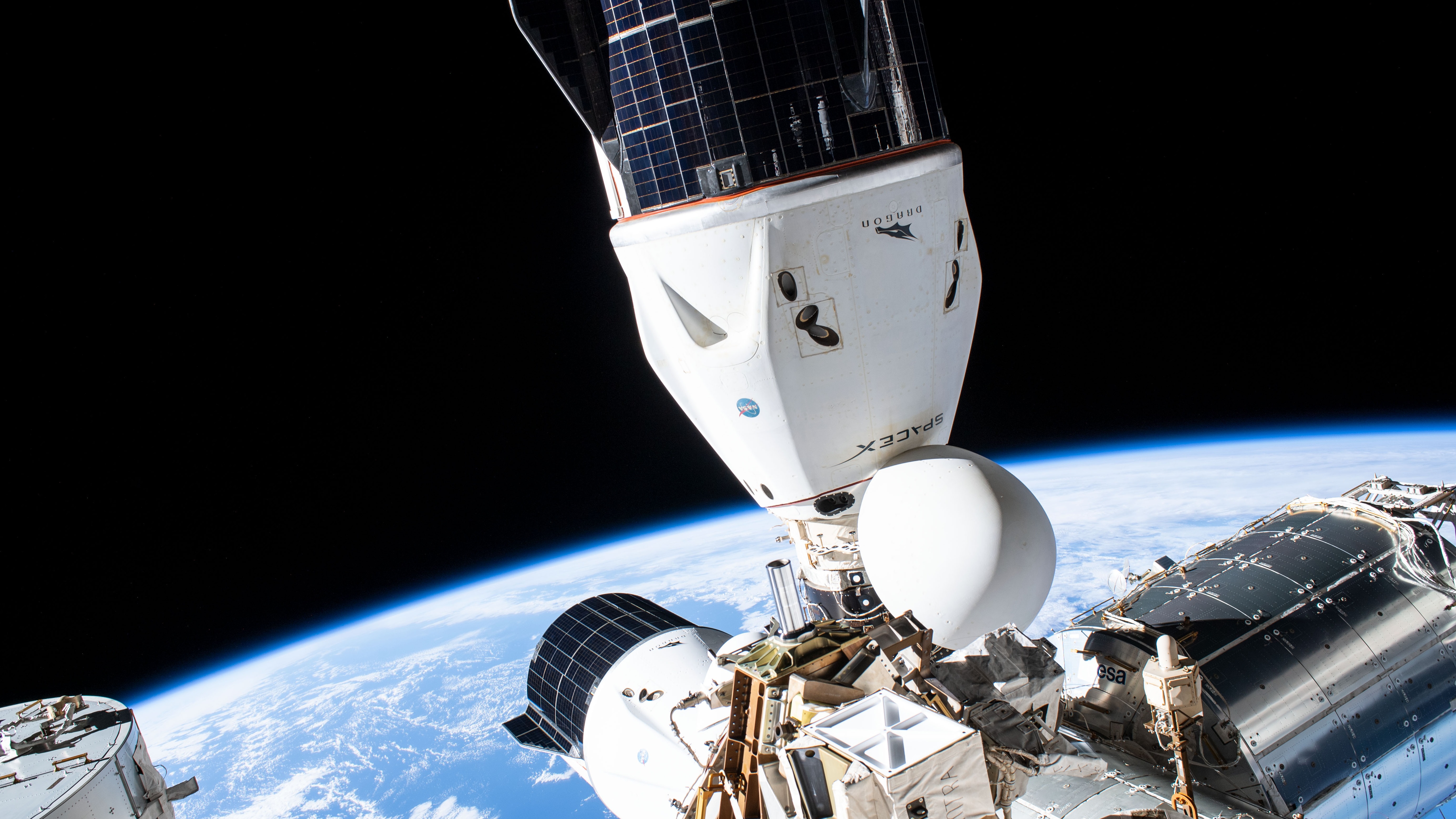
A SpaceX cargo spacecraft had a glitch in space during its last mission.
A SpaceX Dragon docked with the International Space Station for 23 days in June had a thruster valve stuck open due to a corrosion problem, a SpaceX official said Tuesday (July 25) during a NASA press conference.
"It didn't impact the mission at all," Benji Reed, senior director of SpaceX's human spaceflight program, said in the livestreamed opportunity. Since SpaceX's spacecraft are similar enough between the cargo and Crew Dragon versions, however, engineers are looking at all spacecraft in production to address the issue.
So far this situation will have no impact on the launch date for the next astronaut mission, known as Crew-7. Crew-7 will launch with NASA astronaut Jasmin Moghbeli, European Space Agency astronaut Andreas Mogensen, Japan Aerospace Exploration Agency astronaut Satoshi Furukawa, and Konstantin Borisov of Roscosmos.
They will head to the ISS from NASA's Kennedy Space Center at 6:56 a.m. EDT (1056 GMT) on Aug. 17. You can watch the events live at Space.com, via NASA Television.
Related: SpaceX's Crew-7 astronaut launch delayed to Aug. 17
The valve — known as an isolation valve — is designed to come on in case of a thruster leak, Reed said during the press conference. Since no leak was happening at the time it was stuck open, the valve "didn't have to serve any purpose."
The affected spacecraft, known as CRS-28, otherwise returned to Earth normally on June 30 after 25 days in space. After checking into the valve on CRS-28, SpaceX looked at its entire spacecraft line. They found "corrosion among certain units," Reed said, which SpaceX is looking into identifying and addressing.
As part of this work, SpaceX has already tested all the isolation valves on its Crew Dragons and will continue to do so during their normal maintenance and certification for flight. "At this point, no anomalous behavior has been identified on any of those valves. They're all operating, opening and closing appropriately," he said.
While there are backup valves available to isolate a leak in case of trouble, Reed said SpaceX will do its best to address the root cause and to keep NASA apprised of developments.
"We will continue to work closely with NASA and all of our SpaceX teams to ensure that we're ready to fly," he added.
SpaceX engineers, he emphasized, "will continue our mini tests and reviews that we've been doing. These always give us an opportunity to step back, review the data, listen to the hardware, and mitigate any risks."







